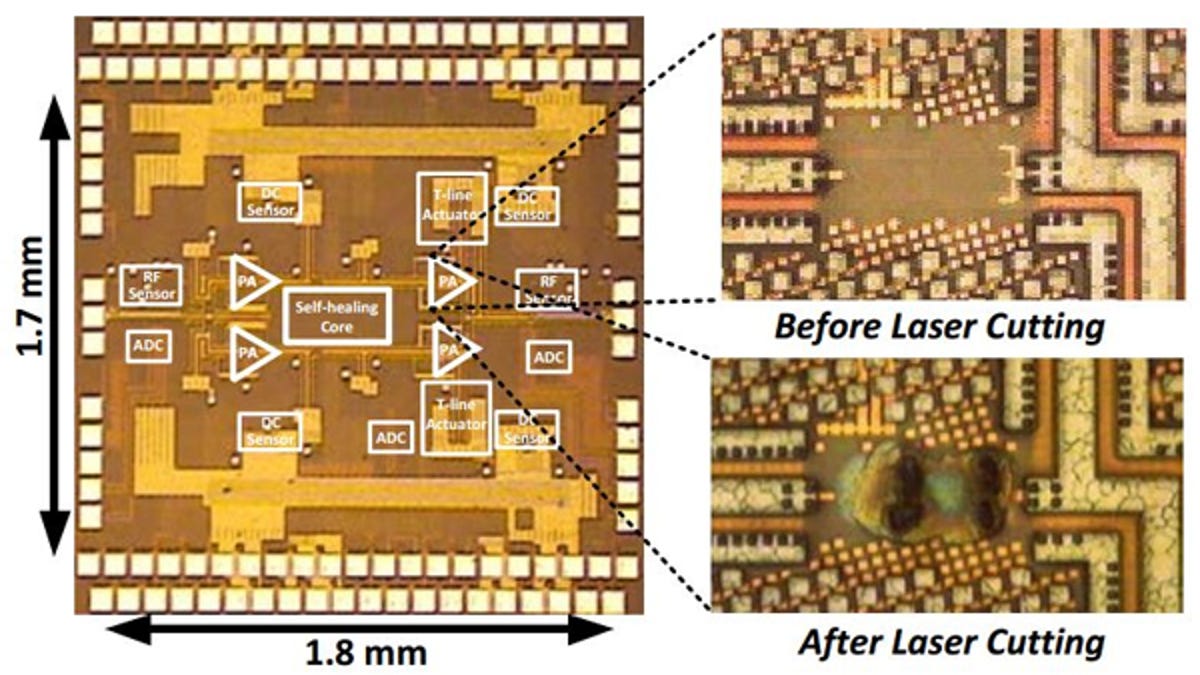Chip, heal thyself!
Engineers at the California Institute of Technology have created an electronic chip that repairs itself when damaged.

(Credit: Steven M.Bowers, Kaushik Sengupta, Kaushik Dasgupta and Ali Hajimiri)
Engineers at the California Institute of Technology (Caltech) have created an electronic chip that repairs itself when damaged.
Imagine you dropped your smartphone, and, as you watched, the cracks sealed themselves up again, dents smoothing over.
It sounds fantastic, and in all honesty it's probably going to be a pipe dream for a very long time. But perhaps self-repairing integrated circuit chips are not. Engineers at the High-Speed Integrated Circuits laboratory from Caltech's Division of Engineering and Applied Science have managed to create just that.
They created a tiny power amplifier (quite an advanced chip) that can develop alternative ways of completing tasks when damaged. When an integrated chip is damaged just a little bit, the entire chip is unusable. By equipping it with sensors that monitor temperature, current, voltage and power, the engineers have been able to create a detection system based on the human immune system.
When something goes wrong, the chip is then able to identify and isolate the problem, issuing a workaround.
Because these chips are more reliable — after all, they keep working even when things go wrong — they consume about half as much power as chips without a self-healing system. And they work intelligently, too; instead of needing to be programmed for every possible scenario, the chips extrapolate based on sensor data what the problem is and how to go about resolving it.
Professor Ali Hajimiri told Phys.org, "Bringing this type of electronic immune system to integrated-circuit chips opens up a world of possibilities. It is truly a shift in the way we view circuits and their ability to operate independently. They can now both diagnose and fix their own problems without any human intervention, moving one step closer to indestructible circuits."
You can view the finished paper, "A Fully-Integrated Self-Healing Power Amplifier", online here (PDF).
Via phys.org

